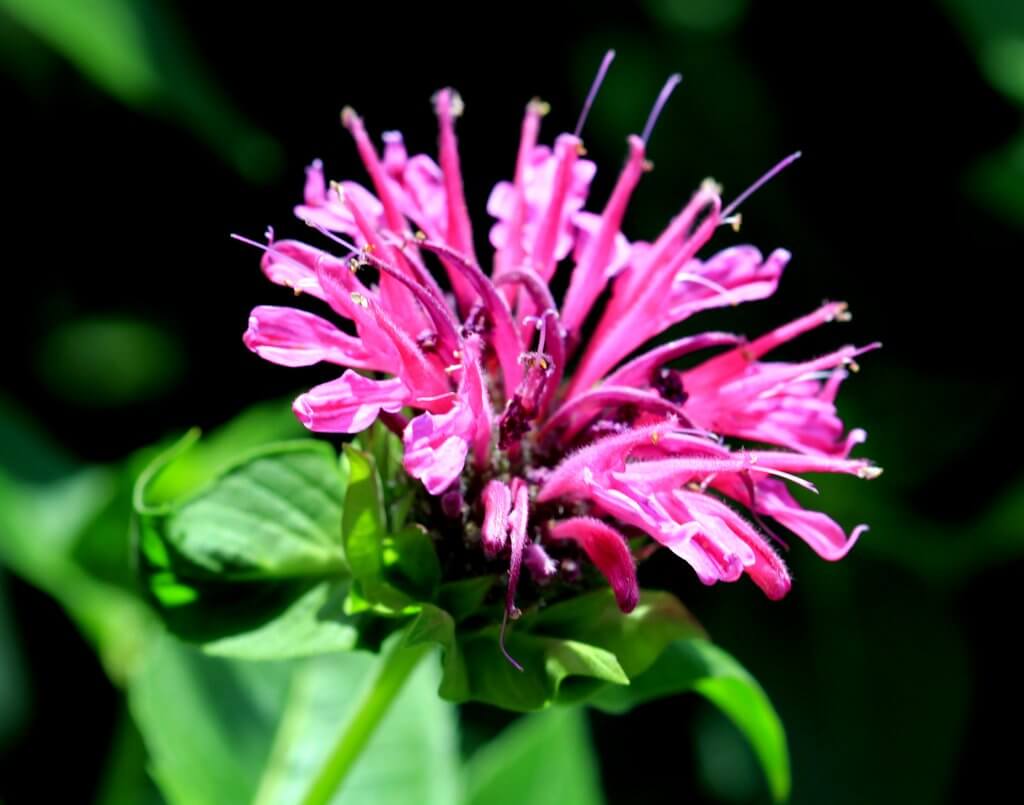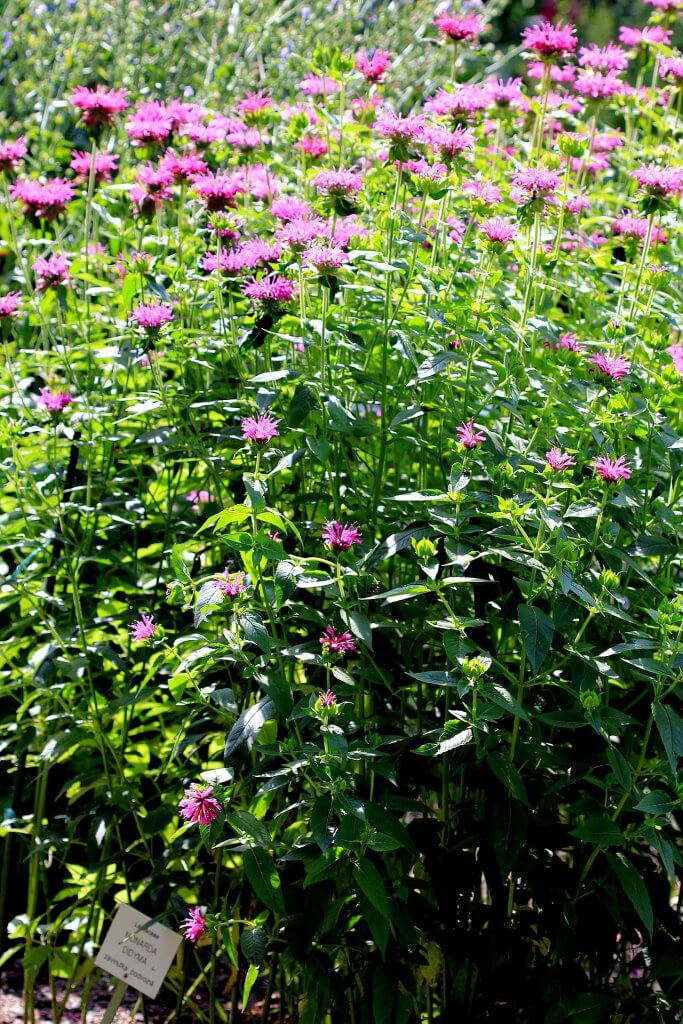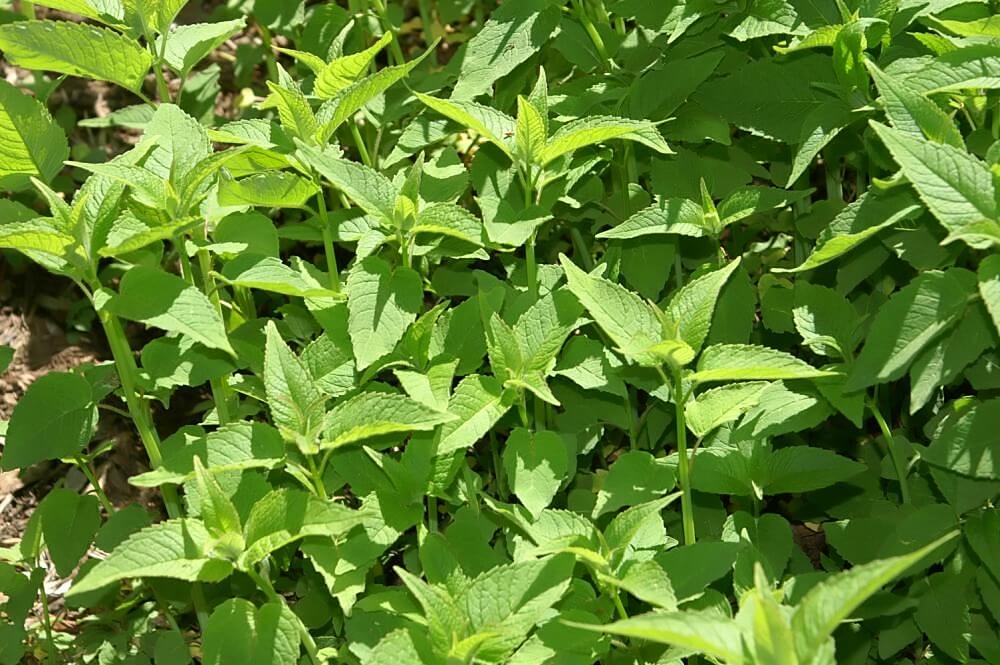Bee balm (Monarda didyma), also known as Wild Bergamot and Horsemint is a herbaceous plant from the mint family. Native to North America, you can find bee balm growing in a number of areas, from hedgerow edges to woodland.
You will find bee balm growing typically to a maximum height of 90cm, with long, slender leaves with a serrated edge. When it begins to flower in mid to late summer, you will see a beautiful cluster of 20-50 flowers emerging from the tip of the stem. Petal colors vary between species, however you could expect to see crimson reds, bright pinks and soft lilacs.
Bee balm is a particularly beautiful and ornamental plant. It attracts not only the attention of many gardeners, but also pollinators, butterflies and hummingbirds.

Cultivation and History of Bee Balm
To grow a happy and healthy bee balm, consider placing it in an area that receives full sun, with moist but well drained soil. With less sun the plant will still thrive, however it will produce far fewer flowers. You do not need to fertilize it and generally it requires little maintenance. However in periods of low rainfall it benefits from a sprinkling of water.

Like mint, bee balm can encroach into other parts of the garden if not controlled or contained. You may consider keeping keeping bee balm in a container or a border where its roots cannot easily spread over a large distance.
Bee balm is a perennial, so during winter after a number of frosts the stems will start browning. You should trim the plant back at this stage, with roughly 10cm of stem left above the ground.
There are a number of commercial bee balm growers who strive to grow different hybrids, from creating new colors, to enhancing a certain flavor. Generally hybrid plants have much less hardiness and will die back much quicker during winter.
Toxicity
Bee balm is not considered toxic, however warnings are in place that advise against taking bee balm if you are pregnant or suffer from thyroid problems. If you use bee balm as a topical ointment it is recommended to avoid sun exposure. This is because certain chemicals can cause photosensitivity.
Uses
Culinary uses of Bee Balm
Native Americans used bee balm as a spice and flavoring when cooking and preparing wild game. You can use bee balm to create a range of kitchen dishes, from pesto, to infused vinegars and oils. Try adding the flowers into a salad for a colorful and slightly spicy twist. Or add the leaves into a fish dish to give it fresh, citrus like lift with a subtle taste of mint.
Products created with Bee Balm
Bee balm petals keep their color well after being dried, this makes them an excellent choice for your home made potpourri.
Medicinal uses of Bee Balm
Whether you are suffering from digestive problems, colds or mild nausea, bee balm leaves can help to alleviate symptoms. It can also be useful in increasing relaxation and aromatherapy. Taking bee balm leaves as a tea has a similar calming effect as Chamomile. Additionaly adding some fresh leaves into hot bath water can create a fresh, lemon scent that promotes relaxation.
Many Native Americans recognised an antibacterial property in bee balm and used it to treat minor sores, wounds and skin infections.
Did you know…
A group of Native Indians called the Oswegos once used bee balm to create a herbal tea. Settlers were taught how to make the recipe. It is said that after the famous Boston Tea Party where settlers lost access to their English teas, Oswego tea became a household staple.

Conclusion
Bee balm can add a beautiful splash of color to your summer garden. Not only does it attract important pollinators like bees, but it also provides a great source of herbal remedies and culinary experimentation. From creating homemade potpourri, to creating your own infused herbal teas. Bee balm is an extremely attractive and useful plant to have on hand.
—————Written by Hannah Sweet
Hannah is a freelance writer and graphic designer from the UK. With a penchant for travelling, photography and all things botanical, she enjoys writing about a wealth of topics and issues, from conservation and slow living, to design and travel. Learn more about her writing and design services at www.sweetmeanders.co
Many of our readers find that subscribing to Eat The Planet is the best way to make sure they don't miss any of our valuable information about wild edibles.
See our privacy policy for more information about ads on this site






